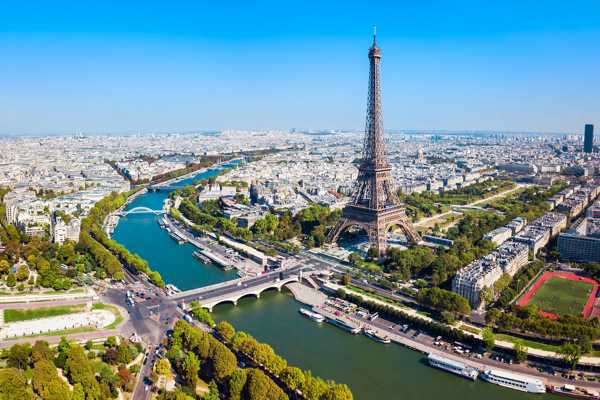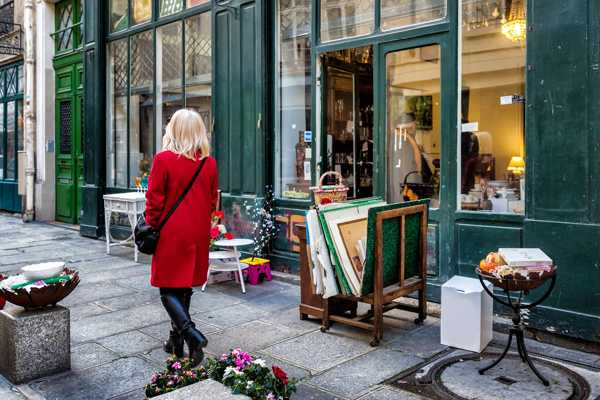The best things to do this summer in Hauts-de-France range from historic towns to cool spots with breathtaking scenery. With over 6 million inhabitants, it’s the 2nd-most densely populated region in France. Yet away from its cities and larger towns, there are plenty of quaint villages and picturesque seaside resorts to explore.
Along with an interesting history, the coastline is arguably Hauts-de-France’s biggest drawcard – particularly the stretch called the Opal Coast. Dunes or cliffs back miles of broad sandy beaches. They flank the English Channel, which the French refer to as “La Manche” because it resembles the shape of a sleeve. Find out more on how to make the most of your summer in Hauts-de-France with our guide below.
- 1
Lille
The cultural and economic capital of Hauts-de-France

- Lịch sử
- Ảnh
Lille is a cultural and economic capital and simply one of the best things to do this summer in Hauts-de-France. It wows visitors with its centuries-old architecture, such as the old Vieille Bourse stock exchange building. The grand site dominates La Grand’Place in the heart of the old city. It was constructed in the 17th century in the Baroque Flemish style, with 24 houses enclosing its pretty courtyard. Today, it’s the haunt of florists and second-hand booksellers.
Nearby, you’ll find the 15th-century Rihour Palace and its opera house in bustling Place du Théâtre. Numerous fascinating museums occupy Lille's historic buildings – the best of the bunch is the Palace of Fine Art.
Bản đồ - 2
Amiens
A city with a splendid cathedral and canal district

- Lịch sử
- Ảnh
Amiens is the historic capital of Picardy, best known for its UNESCO-listed Gothic cathedral. This 13th-century place of worship is the largest church in France and was completed in around 50 years, which was unusually fast. Today, the cathedral provides the backdrop for a dazzling sound and light show.
Close by, the Saint-Leu district features numerous canals flanked by floating gardens called hortillonnages. Because of that, some nickname it ‘Little Venice of the North’. The neighbourhood used to house tanners, weavers and dyers. Today, it’s considerably more peaceful and its colourful waterside buildings are a huge hit with visitors.
Bản đồ - 3
Arras
The site of a 17th-century, UNESCO-listed citadel

- Lịch sử
- Ảnh
Arras is well-known for its splendid Flemish architecture. Over 150 period properties surround 2 cobbled squares, Grand'Place and Heroes Square (Place des Héros). Each is crammed full of boutiques and cafés. The belfry in Place des Héros is UNESCO-listed. The views are breathtaking from the top, 75 metres above the ground.
Heading down instead of up, explore Arras’ boves. These are 10th-century underground chalk quarries that contain a dense network of tunnels. Allied soldiers used them in World War One. Another reason to visit Arras is to taste one of the gingerbread biscuits sold in its bakeries. Called coeurs d'Arras (or Arras hearts), these treats have been a local speciality for 200 years.
Bản đồ - 4
Montreuil-sur-Mer
A historic town that inspired Victor Hugo

- Lịch sử
- Ảnh
Montreuil-sur-Mer is a town on the river Canche in Pas-De-Calais. It was once beside the sea, but tidal changes mean that it's now located a short drive inland. Once a coaching stop, many of the townhouses still feature iron lanterns, making it one of the prettiest settlements along the Opal Coast.
The town centre is enclosed by brick ramparts, with a castle at its heart. These structures were built after Hapsburg Emperor Charles V destroyed Montreuil-sur-Mer in 1537. Victor Hugo used it as one of the locations in his novel Les Misérables. On summer evenings, a cast of 500 volunteers stages a themed sound and light show based on this classic tale.
Bản đồ - 5
Nausicaä Centre National de la Mer
A world-renowned aquarium in the centre of Boulogne-sur-Mer

- Gia đình
- Ảnh
Nausicaä Centre National de la Mer is the largest aquarium in Europe. It’s a hub of discovery, providing visitors with an opportunity to learn about the complex relationship between people and the sea. The emphasis is on science and education but it’s a lot of fun too.
The institution opened in 1991 and now contains around 58,000 creatures representing 1,600 different species. Highlights include the chance to see 12 types of shark up close, including crowd-pleasers like hammerhead sharks, plus manta rays, clownfish, and sea lions.
Địa điểm: Boulevard Sainte-Beuve, 62200 Boulogne-sur-Mer, France
Giờ mở cửa: Daily from 9.30 am to 6.30 pm
Điện thoại: +33 (0)3 21 30 99 99
Bản đồ - 6
André Diligent Museum of Art and Industry
A spectacular museum housed in a former swimming pool

- Lịch sử
The André Diligent Museum of Art and Industry is a spectacular museum housed in a former Art Deco swimming pool in Roubaix. The pool was a treasured local amenity for the people of the industrial town that had prospered because of the manufacture and sale of textiles. After more than 50 years, the pool closed in 1985 in need of significant repairs.
It reopened 16 years later, reimagined as a museum that celebrates the twin themes of art and industry. Architecturally, it is magnificent. The water, now contained within a narrower space, creates a beautiful focal point for art under the original curved roof. Changing rooms have been repurposed as smaller galleries, while the old pump room houses the museum's cafe.
Địa điểm: 23 Rue de l'Espérance, 59100 Roubaix, France
Giờ mở cửa: Tuesday–Thursday from 11 am to 6 pm, Friday from 11 am to 8 pm, Saturday–Sunday from 1 pm to 6 pm (closed on Mondays)
Điện thoại: +33 (0)3 20 69 23 60
Bản đồẢnh của Camster2 (CC BY-SA 3.0) đã điều chỉnh
- 7
The Great Site of the Two Capes
A coastal path linking 2 wild headlands on France’s Opal Coast

- Giá rẻ
- Ảnh
The Great Site of the Two Capes (Grand Site des Deux Caps) encompasses the stretch of coastline from Cap Blanc-Nez to Cap Gris-Nez. These 2 cliffs face off on the Opal Coast – a clifftop path connects the 2 natural landmarks. On a clear day, it’s possible to see the Kent coast across the English Channel.
The 2 headlands take their name from the distinctive colour of the rock: Cap Blanc-Nez is a 135-metre-tall white chalk cliff, while the shorter Cap Gris-Nez comprises limestone, sandstone and grey clay. You can also find a lighthouse on top. Migratory birds are common visitors to the capes, making this a popular destination for birdwatchers.
Bản đồ - 8
Berck-sur-Mer
A delightful seaside resort with a landmark lighthouse

- Giá rẻ
- Lịch sử
- Ảnh
Berck-sur-Mer is a charming seaside resort in northern France that started as a fishing village. In the 19th century, it attracted tuberculosis patients who had been prescribed fresh sea air to aid their recovery. The construction of a railway paved the way for regular tourism and Berck’s future as a seaside resort was assured.
Countless famous artists, among them Manet, Boudin and Lepic, have painted the resort. But you don’t need to be an expert with a brush to appreciate the charm of its pretty pastel-painted beach huts and a broad stretch of sand backed by dunes. Check out the landmark Phare de Berck, a lighthouse and observation deck overlooking a natural seal habitat.
Bản đồ - 9
Fort-Mahon-Plage
A hub for adventure and watersports

- Mạo hiểm
- Giá rẻ
- Gia đình
- Ảnh
Fort-Mahon and Quend Plage are twin resorts in Hauts-de-France, northern France, which boast almost 15 km of sand backed by grassy dunes. There’s often a fresh breeze, making both ideal spots for kitesurfing and sand-yachting. Watersports aficionados will also enjoy windsurfing and speed sailing. Renting a kayak is popular on calm days.
You can also enjoy horseriding along the beach. Just inshore are swathes of pine forest riddled with cycling paths that lead to the Bird Sanctuary at Le Marquenterre. At Belle Dune, a covered swimming pool with waterslides and whirlpools is a fun go-to for the whole family.
Bản đồ - 10
Gerberoy Rose Festival
A floral feast for all the senses

- Giá rẻ
- Cặp đôi
- Ảnh
The Gerberoy Rose Festival (Fête des roses à Gerberoy) is an annual celebration held in the delightful little village in northern France that’s famous for its roses. Artist Henri Le Sidaner, a friend of Monet and Rodin, planted a rose garden overlooking Gerberoy’s ruined castle. He painted it and his pretty little house many times.
The scent of the painter’s roses, and that of the many hydrangeas, wisteria and daisies beside the cobbled lanes of this charming village, ensure this place is a magnet for gardeners. The village hosts the rose festival each year in June. It’s when Le Sidaner’s terraced gardens and workshop are open to the public and the headlining blooms are at their best.
Địa điểm: Gerberoy 60380, France
Giờ mở cửa: June
Bản đồ









